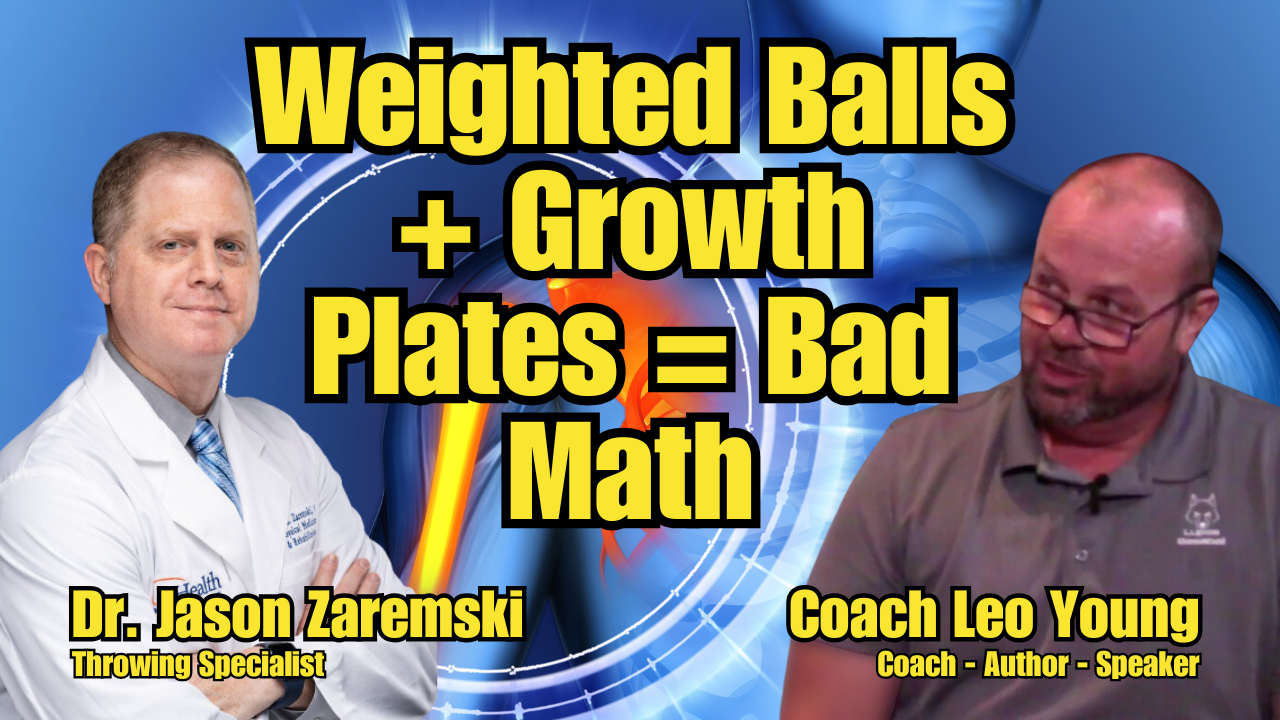Why Weighted Balls and Open Growth Plates Don’t Mix
Weighted ball programs are everywhere—but they’re not for everyone. In this Sore to Soaring Podcast episode, Coach Leo Young and Dr. Jason Zaremski (UF Health Sports Medicine) explain why using weighted balls too early—especially before a pitcher’s growth plates have ossified—can cause irreversible damage. This blog breaks down when it's safe, how to do it right, and why most players need to wait. Why Weighted Balls and Open Growth Plates Don’t Mix Weighted ball programs are marketed as the key to velocity—but for young players, they can be a fast track to long-term damage. Coach Leo Young and Dr. Jason Zaremski, MD, explain why open growth plates and weighted balls should never mix, and how using these programs too early can lead to injuries that no surgery can fix.
INJURY PREVENTION & PERFORMANCE BUILDING STRONGER ATHLETES
Coach Leo Young
7/9/20252 min read


Growth Plates: The Hidden Risk Most Coaches Ignore
Before a young athlete’s bones are fully matured, they have growth plates—soft zones at the ends of long bones like the humerus, ulna, and radius. These plates are where skeletal growth happens, but they’re also structurally vulnerable.
“If you have open growth plates, you should not be using a weighted ball—period,” says Dr. Zaremski, who has published research on this exact risk.
The problem? Most 13–15-year-olds still have open plates. And many are already deep into velocity programs with zero oversight.
Has your son been introduced to weighted ball programs—and did anyone explain the risks? Drop your experience in the video comments.
There’s No Surgery for This Kind of Damage
Tommy John surgery gets all the headlines, but growth plate trauma often can’t be fixed.
Stress fractures, chronic labrum wear, and rotator cuff degradation from repeated overload may never lead to a single dramatic injury moment—but they add up, year after year.
“You're throwing as hard as you can, using a device designed to spike your velocity—but your body isn’t ready for it,” Coach Leo says.
And if you're 14 and already in pain? There's no turning back the clock.
Weighted Balls Aren’t Evil—But They Must Be Used Wisely
The science behind velocity training is legitimate. Used correctly, with proper supervision, weighted balls can be effective for older athletes—but they’re often misused by young players chasing radar gun numbers without knowing the risk.
“You shouldn’t be on a weighted ball program until you’re at least 16, maybe a junior or senior,” Coach Leo says. “And even then, it should be one part of your training—not the entire program.”
Without supervision from a qualified coach, trainer, or sports scientist, weighted ball training becomes guesswork. And guesswork with 70+ mph arm movements is a gamble no kid should make.
Key Takeaways for Parents and Coaches
✅ Growth plates = do not use weighted balls
✅ Weighted ball programs are high-risk for athletes under 16
✅ Long bone growth zones in the arm are especially vulnerable
✅ There is no surgery to reverse long-term soft tissue damage
✅ If you're going to use these tools, use them sparingly, supervised, and with full awareness of the risk
How Sore to Soaring Uses Velocity Tools Safely
At Sore to Soaring, we teach athletes how to build velocity the right way—through strength, mechanics, and progressive overload that matches skeletal maturity.
We don’t ban weighted balls—but we don’t blindly chase them either. Every athlete's plan is based on age, physical readiness, and long-term goals.
Because throwing harder means nothing if your body can’t hold up.
Support our work at: www.SoreToSoaring.org
Disclaimer
The views shared in this article are for informational purposes only and do not represent an endorsement by Lupos Initiative Inc., DBA Sore to Soaring. Always consult a qualified professional before implementing any training, recovery, or medical plan. No affiliation or compensation exists between Sore to Soaring and any for-profit entity mentioned.
To learn more about Dr. Jason Zaremski and UF Health Sports Medicine, visit:
https://ufhealth.org
#WeightedBallRisks #YouthBaseballInjuries #PitchingDevelopment
#SoreToSoaring #ArmCare #GrowthPlateAwareness #SmartTraining
#VelocityTraining #BaseballRecovery #ThrowingHealth
#YouthPitching #BaseballStrength

